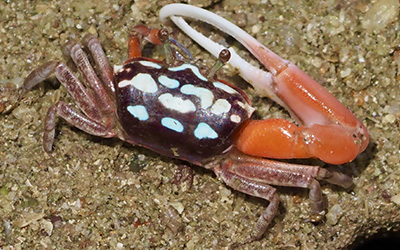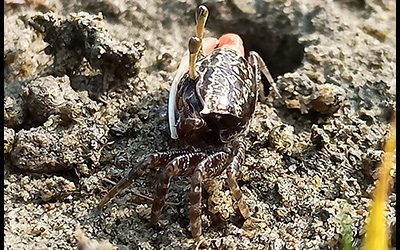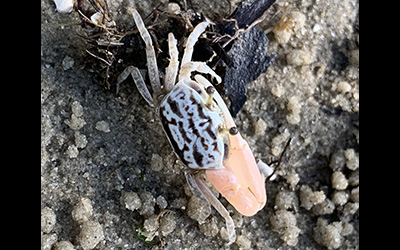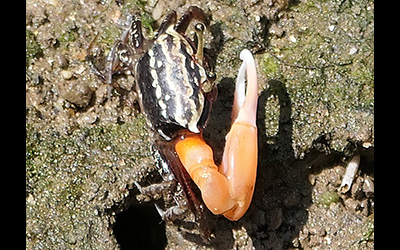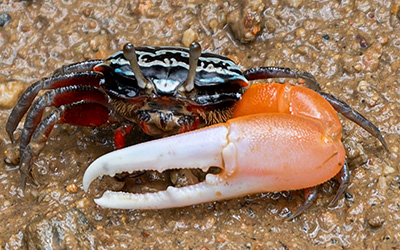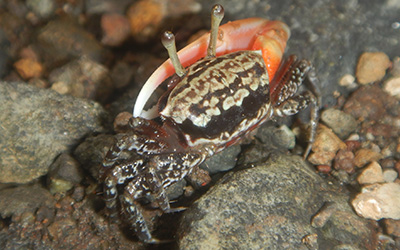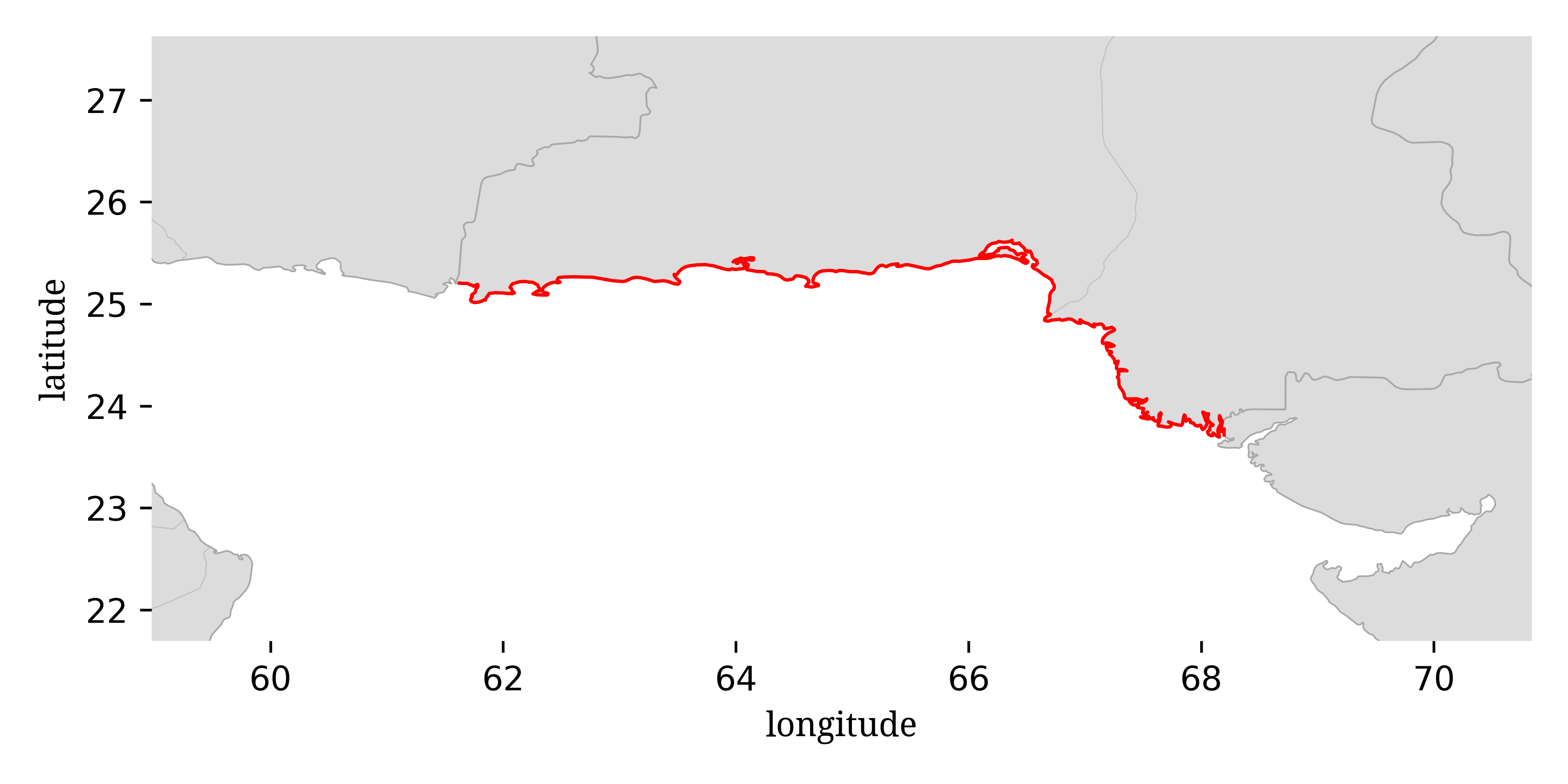
This guide is designed for identification “in the field” where you might be looking at live crabs by eye or through binoculars or from photographs. I will generally try to avoid characters that will require you to physically catch the crab, although I may mention a few for secondary verification. It does not include the more strict taxonomist-style characters that may only be visible under a microscope or via dissection. It is also assumed that the individuals are living, as death (and even capture) can cause dramatic color change.

This is a guide to the fiddler crabs of Pakistan. There are four species currently recognized along this coast:
A number of features can be used to distinguish among these species, but a good place to start is to look at the distance between the base of the eyestalks. Fiddler crabs tend to split into two groups, those with the eyestalks very close together (“narrow front”) and those with the eyestalks separated a bit more (“broad front”). Three of these species (Austruca annulipes, Austruca iranica, and Austruca sindensis) are broad front species, while the fourth, Tubuca alcocki, is a narrow front species.
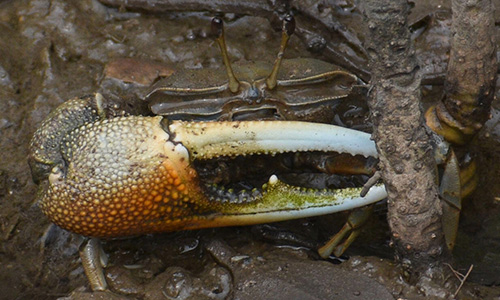
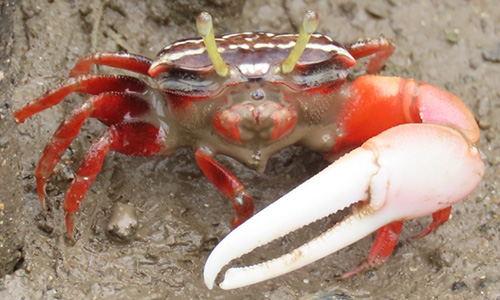
Tubuca alcocki should be easy to identify as it is the only narrow front species in Pakistan, is larger than the other species, and distinct in both color and form. Adult Tubuca alcocki tend to have solid colored, dull, dark blue or brown carapaces, with a large claw with pale, off-white fingers, and a darker hand in dull brown or orange.
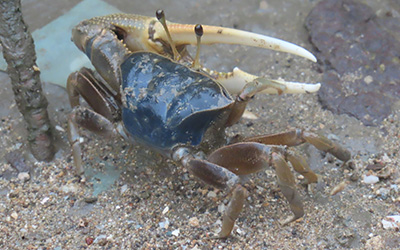
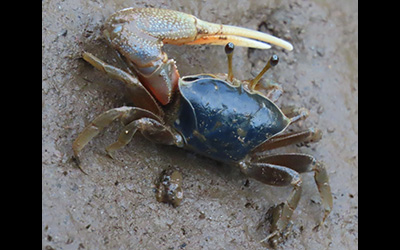
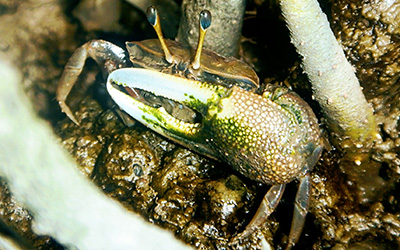

Younger and smaller Tubuca alcocki tend to be much more brightly colored. Their carapace may be more molted, rather than a single solid color, with bright blues, blacks, and some white mixed together. The colors on the large claw are also frequently brighter in color than those on the largest adults.
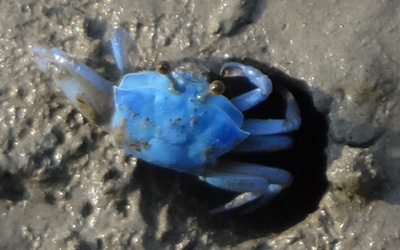

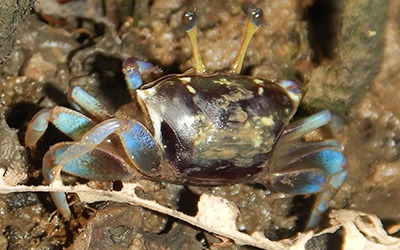
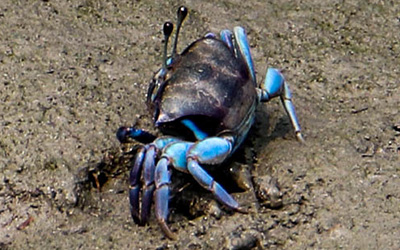
The fingers of the large claw tend to be much straighter and less curved than in the other species, frequently with noticable grooves along them. In the largest individuals, the fingers may be extremely long relative to the size of the hand.
Austruca sindensis is easy to identify by color. Its carapace is generally pale gray, with darker stripes, and its large claw is predominantly lilac.
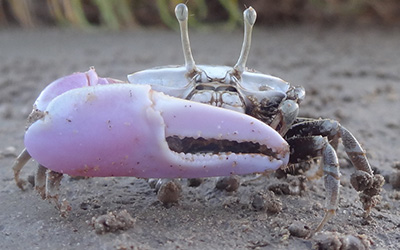
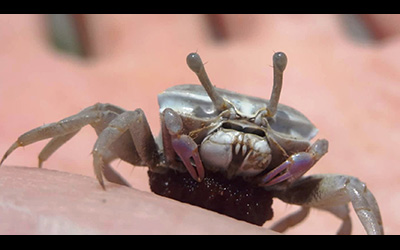
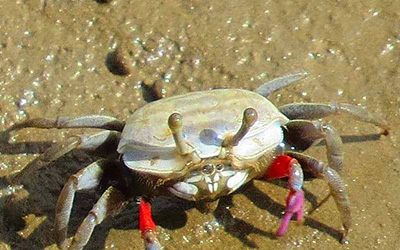
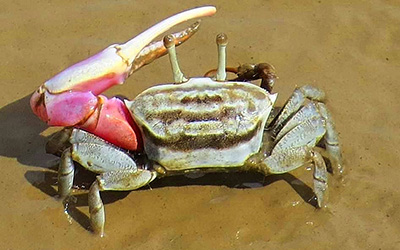
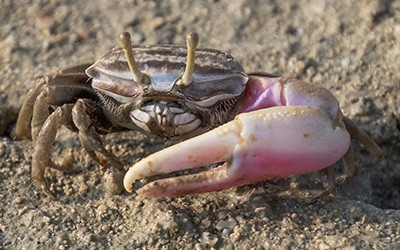
Austruca iranica is easily distinguishable from Austruca sindensis, but similar to Austruca annulipes. It has a carapace that is usually solid white (occasionally with a mix of white and gray/black), its limbs range from dark red to white, and the large arm and claw are usually white (sometimes with a bit of subtle pale color).

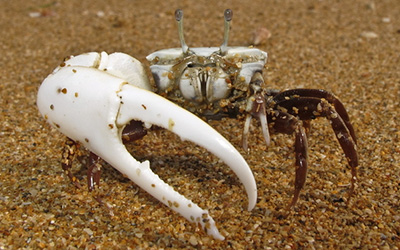
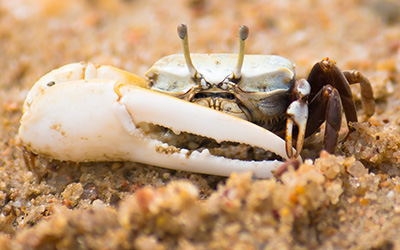
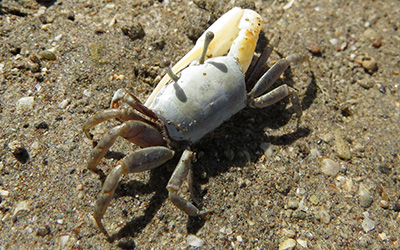
Austruca annulipes is very similar in appearance to Austruca iranica. Generally, the carapace of Austruca annulipes tends to be a mix of black and white while that of Austruca iranica is more likely to be mostly, if not all, white. The large arm of Austruca annulipes is generally orange or red, with some of the color frequently found on the hand of the claw as well, while the limb and claw of Austruca iranica tend to be mostly solid white.
